CALIFORNIA
All the gold in California
Is in a bank in the middle of Beverly Hills in somebody else’s name
So if you’re dreaming about California
It don’t matter at all where you played before, California’s a brand new game.
—Larry Gatlin, All the Gold in California
And California dreamin’ is becomin’ a reality.
—The Mamas and the Papas, California Dreamin’
Yeah, and now I’m runnin’ down California Five
With your laughter in my head
—Jackson Browne, I’m Alive
Drama Queen of the Nation
From the desolate Mojave Desert to the lush vineyards of Napa Valley, from the sprawling metropolis that is Los Angeles to the spectacular Golden Gate Bridge, California seems to want to fulfill people’s life-long dreams. It is a place people go to seek out their fortunes—from the budding young actors and screenwriters of small-town USA, to the immigrants risking everything to cross the international border and begin a new life. It is appropriate that the state was named for a fabled land of riches, complete with Amazonian women and exotic animals. Today the word “California” often conveys that very image.
For some, though, California is the land of the self-involved, the cradle of psychoanalysis, a place full of weirdos and wannabes. What people who live outside of California may know about the state is that Arnold Schwarzenegger was once governor, that there are lots of earthquakes and fires, and that the newest teen idol will make the news virtually every day. And then those people may smile, shake their head, and tsk-tsk it away, congratulating themselves for not living in such a place. But then they perhaps remember their childhood dreams of appearing on the “Tonight Show” with Johnny Carson (or Conan or Leno, for those of more tender years), pressing their hands into the cement at Grauman’s Chinese Theatre, riding a horse along a beautiful beach at sunset, and they might once again feel the temptation to live in a land where, alas, those things really do happen.
Despite its reputation as “laid back,” California seems in reality to be quite a stressful place to live. Its population is greater than that of any other state, and its economy larger than that of France. The fortunes of the state swing to wild extremes—earthquakes here, energy shortages there, economic booms and busts that, like a Hollywood movie, keep the rest of the nation riveted to the goings-on within her borders. As one modern columnist puts it, “California is not the entertainment capital of the world for nothing.”
Even her history is the stuff of movies, full of drama, romance, comedy, and action: Spanish missions, the Gold Rush, Hollywood of the 1930s, Berkeley during the Vietnam War, and the AIDS crisis that hit San Francisco in the 1980s. California has its own flare for the dramatic and a name that, to its bestowers, and to the Quixotic dreamers of today signifies an earthly paradise.
Edward Everett Hale
The key to unlocking the history of how California was named begins with Edward Everett Hale, a late 19th century author and clergyman. Hale is most famous for his short story “The Man Without a Country,” published in the Atlantic Monthly in December of 1863. The fictional story, a first person account of the court martial and punishment of Philip Nolan for his part in the treasonous Aaron Burr plot to invade Texas and Louisiana and hand them over to Spain, was written so realistically that people mistakenly believed Hale was reporting a true story.
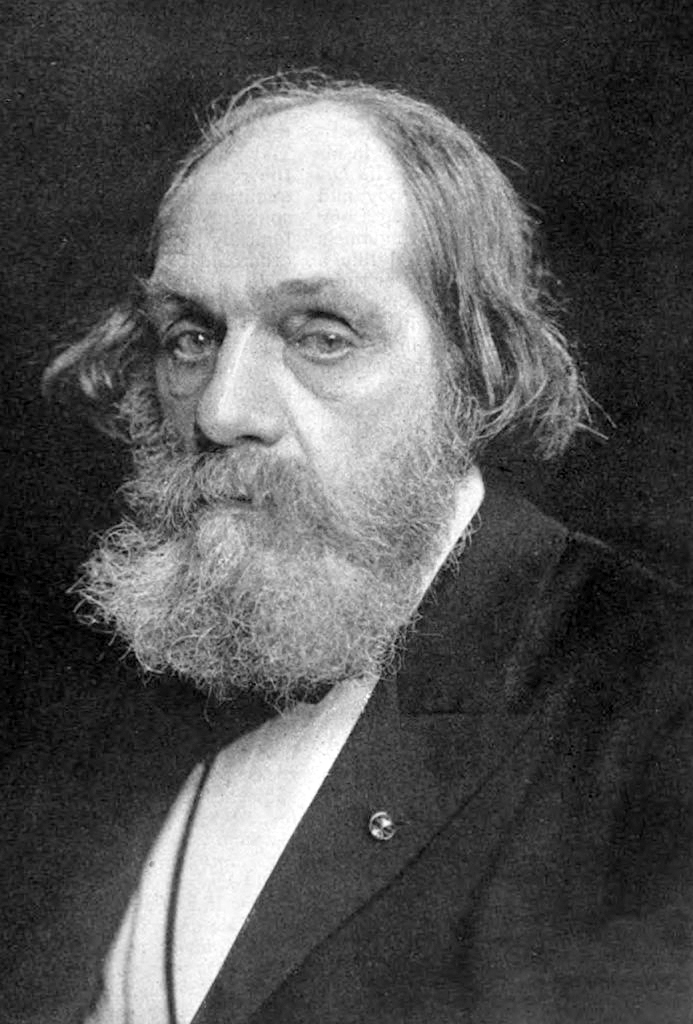
Edward Everett Hale is also famous for his lineage. He was the nephew and namesake of Edward Everett, a famous orator and politician who served his country as Ambassador to Britain, Secretary of State, and Senator from Massachusetts. As one of the most famous orators of the time, Everett was the main speaker at the dedication of the Gettysburg National Cemetery. He delivered a speech that lasted two hours and was followed by Abraham Lincoln’s brief but brilliant Gettysburg Address. Hale was also related to Nathan Hale, his great uncle, after whom Edward Everett Hale’s father, Nathan, was named. His great uncle Nathan Hale, the famous Revolutionary War captain, was hanged by the British as a spy and is famous for the words he supposedly delivered on his way to the gallows moments before his death: “I only regret that I have but one life to lose for my country.” And last, but not least, there is Edward Everett Horton, Hale’s grandson, to whom he lent his name. Horton was a prolific comedic actor in Hollywood in the 1930s but may be best known as the narrator of “Fractured Fairy Tales” in the Rocky and Bullwinkle Show.
As American history goes, it is fascinating to find a family with such notable and diverse accomplishments. But what does all this have to do with the name California?
The origin of the name California has, like that of many states, generated debate through the years. Theories included derivation from the Latin calida fornax meaning “hot oven”; from an Indian word meaning “high hill”; and, among the most ridiculous, from the name of a Spanish priest, Padre “Cal y Fornia.” But on April 30, 1862, Edward Everett Hale presented a paper to the American Antiquarian Society in Boston which cleared up some of the confusion and set forth what he determined—and has proven to be—the most plausible of the theories. Hale’s study of the subject is still generally regarded as authoritative and proposes quite believably that the name “California” originated in a romance novel published in 16th century Spain.
Las Sergas de Esplandian
For centuries humans have sought a paradise on earth. From the Garden of Eden to the Seven Cities of Cibola, from Atlantis to Norumbega, these mythical places were first described by imaginative authors and then searched for by intrepid explorers.
After Christopher Columbus stumbled onto the West Indies in 1492, providing—it was soon learned—vast new acreage in which to search for this elusive paradise, new interest in its discovery and conquest energized the Spanish conquistadors. Soon the popular culture of 16th century Spain contributed elaborate new descriptions of the fabled lands for which the explorers and conquistadors were actively searching.
One of these descriptions, published in 1510 by Garci Ordóñez de Montalvo, was entitled Las Sergas de Esplandian ( The Labors of [the Very Brave Knight] Esplandian ). It was written as a continuation of the romance novel Amadis of Gaul , a series of tales of chivalry that had been translated into Spanish by Montalvo several years earlier. The original story, which was almost certainly never printed, is often attributed to a Portuguese troubador named João Lobeira and was probably inspired by French folklore, in particular the epic poem La Chanson de Roland ( The Song of Roland ). Las Sergas de Esplandian , which was immensely popular in Spain, chronicled the life of Esplandian, son of Amadis, and contained a chapter that describes a mythical island called “California,” spelled precisely as we now spell the name of the state, “which was very close to the region of the Earthly Paradise.”
The island’s name is generally believed to have been fabricated by Montalvo but possibly based on the Arabic root “khalifa” or “caliph,” which is a title for the leader of an Islamic group or state that literally means “successor to Mohammed.” Indeed La Chanson de Roland contains a reference to a place called “Califerne,” a probable reference to the Muslim world which may have been the direct inspiration for Montalvo.
The fictional island of California is a strange paradise inhabited by one-breasted Amazonian women who wear “golden armor studded all over with very precious stones, which were found on California Island as abundantly as rocks in a field.” These women had domesticated a mythical creature called a “griffin” which had the head and wings of an eagle and the body of a lion. The griffins were used to attack and kill any male invaders and male offspring except those men used by the Amazons for purposes of procreation. In the story, the queen of California, Queen Califia “who was bigger and more beautiful than the other women on the island,” assembles many of her warriors and leaves the island to achieve fortune and glory in distant wars.
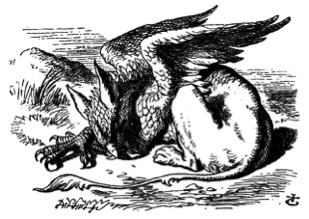
The popularity of the novel probably thrust the word California into the general vernacular of the mid-1500s, especially among conquistadors, who were engaged in finding it. But it was several decades before the word began to appear on maps.
Baja y Alta
The question of who first applied the name California, and when they applied it, to any part of western North America has long been the subject of controversy and study.1 What is clear is that the name first designated the southern tip of the Baja peninsula, which was thought to be an island (as was Montalvo’s California), and only gradually began to describe points further north.
The name probably appeared first on navigational maps around the mid 1560s as “Golfo de California” and “C[abo] California.” Antonio de Herrera, a primary Spanish historian, claimed that it was Hernán Cortes himself “who placed this name upon it” (“que le puso este nombre”3), though it is possible that the name was applied two years earlier when Cortes sent an expedition to explore the Baja peninsula which was still believed to be an island in 1533. That expedition, commanded by Diego de Becerra, was soon overtaken by a mutinous crew led by Fortun Ximenez. After murdering Becerra, Ximenez took the ship and the mutineers to points north where natives allegedly killed Ximenez and some of the others. A few of the survivors returned to Cortes with tales of having visited a strange land abundant in pearls. It is possible that these mutineers applied the name “California” to their discoveries and that it stuck—if not immediately with Cortes, then with the other sailors and conquerors who heard their tales. Cortes himself set out for this “island” in 1535, reaching what is now the Bay of La Paz on May 3rd of that year. He named Puerto de Santa Cruz after the feast day on which his expedition had set sail and named the land surrounding it La Tierra de Santa Cruz.
But even while Cortes was applying his “official” name, chroniclers of his expeditions as well as those of other explorers began to use the more popular label “California,” first to the sea and the “island,” and later to the peninsula and the coast as far north as the 42nd parallel. “There were, of course, exceptions,” points out a 1993 article in Californians magazine, “…some early maps also applied the name Islas Carolinas (in honor of Charles V of Spain) to those Gulf islands, and some sources say that while Sir Francis Drake camped on the California coast near Point Reyes at what is now known as Drake’s Bay, in 1579 he allegedly took possession of the land in the name of the Queen and called it New Albion, which appellation also shows up on several early maps.”2
Meanwhile, in 1542, Juan Rodriquez Cabrillo sailed north along the west coast of the continent and laid official claim to the land for Spain. Cabrillo, like many later Spaniards, was searching for the fabled Strait of Anian, the Spanish version of theNorthwest Passage, that non-existent waterway connecting the North Atlantic to the North Pacific. The futile search for this strait would spur exploration of the west coast for centuries.
During this time, the area consisting of the southern part of the current state of California was often drawn as “Quivera,” yet another “earthly paradise” sought by explorers, and the area north of San Francisco was, as mentioned earlier, named New Albion by Sir Francis Drake in 1579 after the Celtic name for Great Britain. Early in the 1700s the southern peninsula of California became established on European maps. For purposes of prior claim, the British continued to refer to the northern Pacific Coast as New Albion, and the Spanish as California.
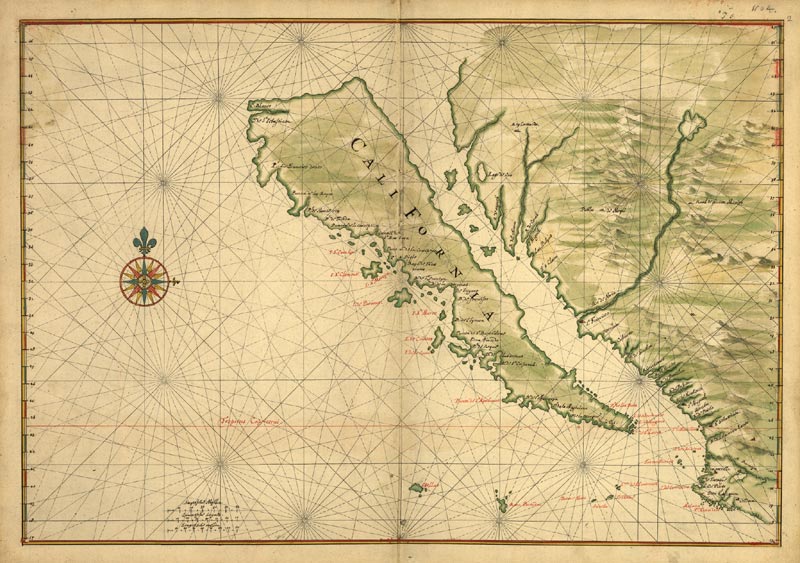
But until the late 1700s, neither of these Californias was settled by Europeans. Baja California was too barren and unforgiving a land, the Spaniards learned, and Alta (“upper” or northern) California, while its coastline was certainly explored by those searching for the Strait of Anian, was too remote from Mexico with no immediate prospects for wealth to expend serious resources in colonization. Ironically it was the promise of gold that would, one hundred years later, prompt the feverish rush to California by Americans.
European Settlement
The dearth of settlers changed, however, with the end of the Seven Years War—a global conflict fought between 1756 and 1763 that included the North American “French and Indian War.” Once peace was established between England and France, both of these countries had people and money to spend on new exploration and colonization, and settlement of California was a coveted goal for both. Also poised to encroach upon Alta California were the Russians who had established a lucrative fur trade in Alaska and were attempting to push south.
In 1769 a Franciscan priest named Padre Junipero Serra began establishing missions in conjunction with the Spanish military’s efforts to build presidios—defensive forts—along the coast of Alta California. Beginning with the mission of San Diego, Serra established nine missions along the western shores. More would be constructed after his death, but his efforts had the desired effect for the Spanish authorities. Though not heavily populated, the missions and their Indian citizenry gave Spain the control, albeit tenuous, they needed in the region to maintain their claim to the land.
Life changed very little for the Californios with the Mexican revolution and the establishment of Mexico as a sovereign nation in 1822, but change would come rapidly for the next three decades. In 1836 a revolution led by Juan Bautista Alvarado, a savvy and pragmatic Mexican diplomat, established California as a sovereign state. When, however, Alvarado was offered the official governorship of the province by Mexican government officials, he accepted and brought California back into the Mexican fold. He was deposed in 1842, by which time American settlers were beginning to dot the California landscape.
Four years later, on June 14, 1846, a group of 33 Americans led by William Ide and supported by the famous “Pathfinder” John C. Fremont, took control of the town of Sonoma, raising their hastily constructed Grizzly bear flag in what would later be called the “Bear Flag Revolt.” The Bear Flaggers declared California an independent republic and named Ide their commander-in-chief, but he would hold that office for less than a month. On July 9 the U.S. officially declared war with Mexico, and the clear objects of the confrontation were Texas and California.
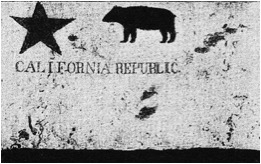
Before the end of the Mexican-American War, the U.S. won California with the surrender of Mexican forces to Fremont in January of 1847. The war’s official end would not come for another year with the Treaty of Guadalupe Hidalgo in February of 1848.
And Not a Moment Too Soon
Days before the official end of the war, on January 24, 1848, gold was discovered near Sutter’s Mill in Coloma, about fifty miles northeast of Sacramento, on the banks of the American Fork River. Within two years, more than half a million people from all over the world descended upon the region to claim their share of the gold. Unlike previously acquired territory where the tiniest of populations would request territorial status with ambitions of statehood, California’s population grew rapidly with no government in place to manage it. The result was chaos in many areas, and vigilantism was codified as the only law in some mining communities. The U.S. Congress, mired in the politics of slavery and the Missouri Compromise, had difficulty agreeing on the future of the region, but something clearly had to be done.
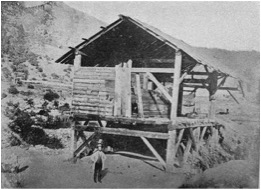
A contingent of powerful Californians drafted their own constitution in September of 1849 and determined they would request admission to the U.S. as a state, bypassing the territory phase. They also proactively decided the pressing question of slavery, voting unanimously to ban the institution.
The federal government acted relatively quickly, as such things usually went, and passed the Compromise of 1850, which inducted California as a free state. It would be one of only two states since Ohio (the 17th) that would come into the union bypassing the normal territorial process.[ 1 ]
Perhaps because of the need for quick action, the overwhelming issue of slavery, and the centuries-old name that had already been established on the land, the subject of a new name for the region was never seriously debated, and the statehood bill was signed by President Millard Fillmore on September 9, 1850. California became the 31st state in the union, and one of only three (Texas and Vermont are the others) that had known life as an independent republic, albeit for only a few short weeks.
It is fitting that California, a state with one of the most dramatic and unique paths to statehood, be our nation’s ground-zero for film and television entertainment. Her legacy as a drama queen was well established by the time she entered the union, and no other state seems imminently able or willing to wrest that title from her.
End Notes
1.André R. Willieme, “Stalking the Origins of a Singular Name,” Californians, 11(3).
2.Willieme, p. 18.
3.Davidson, George, “The Origin and Meaning of the Name California: Califia the Queen of the Island of California,” Transactions and Proceedings of the Geographical Society of the Pacific, Volume VI, Part I; Series II, 1910.